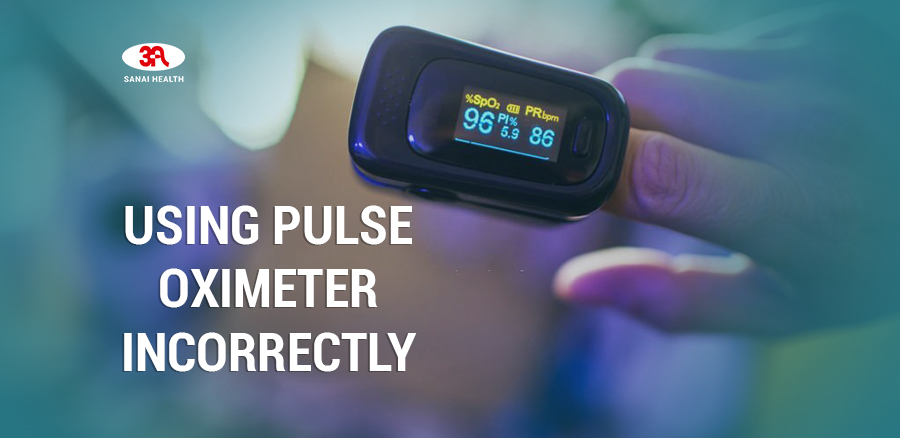Pulse Oximeters Can Reveal Incorrect Results, Here’s how!
One of the first things that happen when a patient visits the emergency room is them getting hooked to a pulse oximeter. Not only is the pulse oximeter an important part of the emergency room, you will also note that pulse oximeters are in use in the operation room, intensive care units, critical care units and at a patient’s home.
The pulse oximeter shows the physicians blood oxygen levels of the patient. From that point onwards, the patient’s treatment is planned. The patient will receive oxygen as per the readings of the pulse oximeter.
If a patient’s pulse oximeter shows that they have more than 96% of SpO2, their oxygen levels are normal and they don’t need any supplemental oxygen. On the other end of the spectrum we have patients with less than 92% SpO2 and these patients end up getting oxygen therapy because they are hypoxemic.
How does the Pulse Oximeter work?
Pulse oximeters record your blood oxygen level based on the function and absorption of a red light (LED with 60 nm wavelength) and the infrared light (940 nm wavelength). The two types of hemoglobin i.e. the oxygenated and deoxygenated hemoglobin absorb these lights to a different level. The oxygenated hemoglobin happily absorbs infrared light and the red light passes through the semitransparent body part (fingertip or ear lobe).
The deoxygenated hemoglobin is partial to red light and lets the infrared light pass easily. The light detector in the other side of the device reads up the different levels of light that passes through the body part and then quantifies it.
Studies have revealed that there are some issues with the accuracy of the pulse oximeter readings. Let’s have a look at some of the main hindrances in getting accurate SpO2 levels.
Have You Heard About Occult Hypoxemia?
Occult hypoxemia has recently made waves because of the COVID-19 pandemic. The condition can be defined as the difference between SpO2 as noted by the pulse oximeter and the SaO2 as noted as the arterial saturation of oxygen. The particular difference showcased how the SaO2 was less than 88% while the pulse oximeter reading showed >92% SpO2.
The readings were found in people who registered their race as black.
Occult Hypoxemia and COVID-19 Treatment Plans- The Link
It was noted again and again that there was a discrepancy in the reported oxygen levels between pulse oximeter and arterial blood oxygen. The effect of this particular discrepancy was that the patients were not getting fully optimized treatment.
Consider a hypoxemic patient (white/Caucasian) coming to the emergency room with COVID-19. A nurse checks the patient’s pulse meter reading, see that it is low and prescribes them supplemental oxygen. On the other hand, a black or Hispanic patient applies the same device on their hand, they have SaO2 of less than 90% and yet the pulse oximeter showed 98% SpO2. This reading will result in the patient not getting supplemental oxygen even when they need it.
Improper treatment planning will ruin the prognosis of the patient and reduce the quality of care at the same time. Pigmentation in the skin of patients reduces the accuracy, the pulse oximeter reads it as an oxygen saturated blood.
Why is Skin Temperature Important when it comes to checking Oxygen Levels?
A cold hand basically means that the limb is not getting enough blood supply. The body has cut short the blood supply in the limbs. At this time if a pulse oximeter were attached to the patients finger, it would show oxygen levels that are not close to the real SaO2. The less amount of blood in the region can show a patient as having hypoxia. Hence it is best if the patient’s hands were warmed through rubbing to get the blood flowing, this will ensure that the patient’s blood oxygen is actually checked.
What if We Attach the Pulse Oximeter to Another Body Part?
The pulse oximeter measures the blood oxygen levels by the means of LED and infrared lights passing through the fingertip. A fingertip in turn has layers of skin, fat, bone and nail. The light is absorbed by the hemoglobin deep within the blood vessels in the finger tissue. Thanks to the thinness of the structures in a fingertip, the different red and infrared lights pass through the layers.
Now, if you were to use any other body part to check blood oxygen levels, the accuracy of the oximeter will decline. The thicker tissues will be simply unable to properly transmit light through the finger tip.
Nail Polish is Your Enemy!
Research has shown that the patients who showed up with nails coated with gel or normal varnish polish, had irregular oxygen results. The SpO2 and SaO2 don’t match in these patients. Why is that?
Well, patients with nail painted, specifically with dark colors like black, blue and purple were showing a varying SpO2 and SaO2. The pulse oximeter overestimated the oxygen in the blood. While the presence of nail polish in general is bad for measuring blood oxygen levels with a pulse oximeter, the use of dark colors can further increase the difference between SpO2 and SaO2.
The Takeaway
Pulse oximeter helps out in many many surgical and clinical process, patients also use it at home to monitor their oxygen levels. We all need to be vigilant about the above mentioned issues to truly get a good reading. The FDA has not been yet able to hammer out the issues with the occult hypoxemia and pulse oximeter, the responsibility lies with the physician to make sure that patients are properly examined.

